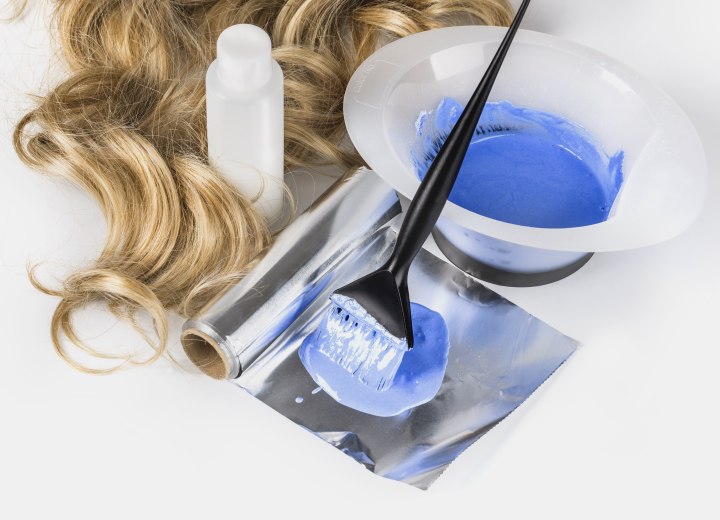Foil Folding for Re-touch Bleaching

A: When performing re-touch bleaching services, proper foil folding technique is absolutely critical for achieving clean, professional results while protecting previously processed hair from unnecessary chemical exposure. The key to success lies in understanding both the mechanics of foil placement and the strategic approach to sectioning.
When preparing your foils, pre-crease them lightly along the center to establish a folding guideline. This small preparation step will save you time and create more consistent results throughout the service.
The foundation of successful re-touch foiling begins with proper initial placement. Position the foil firmly against the scalp, ensuring there are no air pockets or loose areas where bleach could potentially seep through. The foil should lay flat against the head, following the natural contours of the scalp. This secure contact point is your first line of defense against chemical migration.
When bringing the hair over onto the foil, maintain tension without pulling too aggressively. The hair should lay smoothly across the foil surface, allowing you to clearly see the demarcation between new growth and previously processed lengths.
After applying your bleach mixture to the re-touch area, work quickly but methodically through the folding process. Begin by bringing the far edge of the foil over the bleached section, creating your first fold. This initial fold should completely cover the bleached area with a slight overlap to ensure no product is exposed.
The diagonal folding technique is where the magic happens. Instead of simply folding straight across, angle your fold to create a diagonal line that naturally redirects the hair ends away from the bleached root area. This diagonal approach serves multiple purposes: it prevents the lengths from accidentally coming into contact with fresh bleach, creates better separation between different hair sections, and allows for more efficient heat distribution during processing.
Once you've established your diagonal fold, take the pointed end that naturally forms and fold it downward to create what's commonly called a "tent" formation. This tent structure is incredibly effective at holding the hair lengths away from the scalp area while maintaining the integrity of your fold.
Some stylists prefer to add a small additional fold at the very tip of the tent to create an even more secure closure. This extra step can be particularly helpful when working with longer hair or when the client will be moving around during processing.
This systematic approach to foil folding, combined with careful attention to detail and proper timing, will help you achieve consistently excellent re-touch results while protecting your client's hair from unnecessary chemical exposure.
©Hairfinder.com
See also:
Hair coloring
How to highlight with foils
Could I use regular aluminum foil to foil highlight someone's hair?